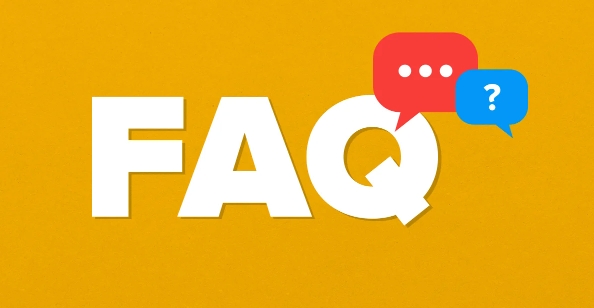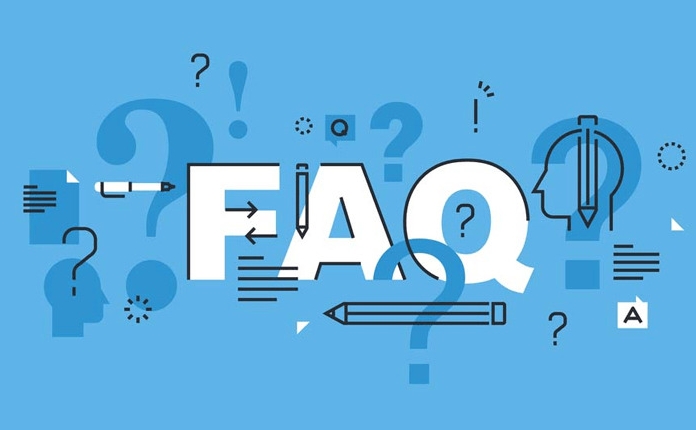To reduce Chrome memory usage, deal with low-priority tasks by turning off unnecessary extensions, enabling hibernation tags, limiting background processes and GPU usage, and using a lightweight browser. 1. Close or uninstall infrequently used extensions, especially plug-ins in the backend; 2. Ensure that the "Tag Hibernation" function is enabled and automatically freeze the unactivated tags; 3. End the high memory-occupy page through the Task Manager and turn off hardware acceleration; 4. Divide secondary tasks to other browsers or dedicated tag management tools.

Many people have encountered the problem of using too much memory in Chrome, especially when opening multiple tabs or running some complex web applications. To reduce Chrome's memory usage, there is no need to be too complicated operations, mainly to optimize usage habits and adjust settings.

Close unnecessary extensions
Many users have installed many browser plug-ins, but in fact, even if these plug-ins are not actively used, they will run in the background and occupy memory. You can manage it in the following ways:

- Click the three dots in the upper right corner → Settings → Extended Programs
- Check out installed plugins and directly close or uninstall uncommonly used plugins
- Pay special attention to plug-ins that reside in the background, automatically refresh or monitor page behavior
It is recommended to keep only a few extensions that are really needed, such as core tools such as ad blocking and password management.
Use the Hibernation Tag feature (for new Chrome)
Chrome supports tab hibernation function starting from a certain version, which can effectively reduce memory consumption when opening multiple tabs at the same time.

This function is enabled by default. If you are not sure whether it is enabled, you can check it like this:
- Enter
chrome://flagsto the address bar - Search for keywords "tab freeze" or "sleeping tabs"
- Make sure the relevant options are set to Enabled
When certain tabs are not activated for a long time, Chrome will automatically "freeze" them, freeing memory resources. Loading will resume when you click on the tab.
Restrict background processes and GPU usage
Sometimes Chrome will start a large number of background processes, especially GPU-related modules, which can also be adjusted appropriately:
- Open Task Manager (Shift Esc) to see which pages or extensions take up a lot of memory
- Actively end the page that is stuck or unresponsive
- Turning off hardware acceleration in settings may help:
- Settings → System → Use Hardware Acceleration Mode (if available) → Off
While hardware acceleration often contributes to performance, it actually increases the burden in some devices or driver environments.
Alternative: Use a lightweight browser to handle low-priority tasks
If you often open more than a dozen or even dozens of web pages at the same time, you might as well consider diversion of some tags to other browsers. For example:
- Open secondary content in Edge, Firefox or domestic browser
- Use special "tag manager" browsers, such as Sidekick, Arc, etc., which are more suitable for multitasking scenarios
This allows Chrome to only be responsible for the current key tasks and not slow down the entire system.
Basically these methods are all, and there is no need for too complicated operations. The key is to clean up regularly and allocate resources reasonably. Some functions such as tag hibernation may not be noticed by many people, but they can indeed have obvious effects.
The above is the detailed content of How to stop Chrome from using so much memory. For more information, please follow other related articles on the PHP Chinese website!

Hot AI Tools

Undress AI Tool
Undress images for free

Undresser.AI Undress
AI-powered app for creating realistic nude photos

AI Clothes Remover
Online AI tool for removing clothes from photos.

Clothoff.io
AI clothes remover

Video Face Swap
Swap faces in any video effortlessly with our completely free AI face swap tool!

Hot Article

Hot Tools

Notepad++7.3.1
Easy-to-use and free code editor

SublimeText3 Chinese version
Chinese version, very easy to use

Zend Studio 13.0.1
Powerful PHP integrated development environment

Dreamweaver CS6
Visual web development tools

SublimeText3 Mac version
God-level code editing software (SublimeText3)

Hot Topics
 How to stop Chrome from updating in the background on Mac
Jul 21, 2025 am 12:41 AM
How to stop Chrome from updating in the background on Mac
Jul 21, 2025 am 12:41 AM
To prevent Chrome from automatically updating on Mac, it can be done by disabling update services, modifying permissions, and restricting network access. 1. Use terminal commands to disable the GoogleSoftwareUpdate daemon to prevent background updates; 2. Modify update directory permissions to prevent Chrome from starting the update process by itself; 3. Restrict Chrome's outbound network connection through system firewall or third-party tools to further eliminate update requests. Using these methods in combination can effectively prevent Chrome from being automatically updated.
 How to fix Chrome's spell checker not working
Jul 20, 2025 am 12:03 AM
How to fix Chrome's spell checker not working
Jul 20, 2025 am 12:03 AM
When Chrome spelling check fails, you can troubleshoot and fix it by following the following steps: 1. Confirm that the "Use Spelling Check" function is enabled and check whether the corresponding language is enabled in the language settings; 2. Adjust the input language order, delete the redundant language, and ensure that the main language enables spelling check; 3. Close possible conflicting extensions, especially syntax or translation plug-ins; 4. Update Chrome to the latest version and check the operating system updates. If it still doesn't work, try resetting Chrome settings.
 How to stop Chrome from automatically opening PDF files
Jul 21, 2025 am 12:09 AM
How to stop Chrome from automatically opening PDF files
Jul 21, 2025 am 12:09 AM
To let Chrome download directly instead of opening it when clicking on the PDF link, 1. Enter chrome://settings/content/pdfDocuments to check "DownloadPDFfilesinsteadofautomatically opening theminChrome"; 2. Check whether there are plug-ins such as Lightpdf or Smallpdf interfering behavior, you can try to disable the test; 3. You can use the developer tools to copy the link and paste the new tag to trigger the download. The above methods can be selected according to the situation.
 How to fix screen tearing when scrolling in Chrome
Jul 25, 2025 am 12:55 AM
How to fix screen tearing when scrolling in Chrome
Jul 25, 2025 am 12:55 AM
The screen tear occurs when the Chrome browser scrolls, which is usually caused by the out-of-synchronization of rendering and refresh. The solutions are as follows: 1. Ensure that hardware acceleration is enabled, you can manually check the settings and restart the browser; 2. Forcefully enable Compositor and related options to optimize rendering; 3. Check the display refresh rate, use single-screen testing, and enable VSync or adaptive synchronization technology on supported devices; 4. Update the graphics card driver or replace the display interface such as using the DP interface. It is recommended to start the troubleshooting with simple steps and gradually adjust to find the best configuration.
 How to fix Chrome profile sync getting stuck in setup
Jul 25, 2025 am 01:10 AM
How to fix Chrome profile sync getting stuck in setup
Jul 25, 2025 am 01:10 AM
The problem of Chrome sync stuck can be solved through the following steps: 1. Check the network connection and Google account status to ensure normal access; 2. Log out and log in to the Chrome account again; 3. Clear the synchronized data and restart the browser; 4. Reset Chrome settings; 5. Try the traceless mode or new user profile. Sequentially checking can effectively restore the synchronization function.
 Chrome keeps opening new tabs by itself
Jul 22, 2025 am 12:22 AM
Chrome keeps opening new tabs by itself
Jul 22, 2025 am 12:22 AM
The problem of Chrome automatically popping up new tabs is usually caused by malicious extensions, advertising scripts, or browser hijacking. The solutions are as follows: 1. Check and uninstall suspicious extensions, especially ad-class plug-ins; 2. Clear browser caches and cookies to eliminate data corruption; 3. Check whether the homepage and default search engine settings have been tampered with and manually corrected; 4. Use antivirus software such as WindowsDefender or Malwarebytes to scan and clear potential malware; 5. Finally, try resetting Chrome settings to restore the default configuration. Troubleshooting in this order can effectively solve most abnormal labeling problems.
 How to fix Chrome opening new windows instead of tabs
Jul 26, 2025 am 01:29 AM
How to fix Chrome opening new windows instead of tabs
Jul 26, 2025 am 01:29 AM
1. Check whether the shortcut attribute has additional parameters and delete it; 2. Clear cache and switch startup settings, or create new user information; 3. Extend the impact and disable the problem plug-in through traceless mode. Chrome pops up new windows instead of tabs usually due to exceptions in shortcut parameters, cache configuration conflicts, or third-party extension interference. Check and adjust the corresponding settings in turn to resolve.
 How to fix Chrome when it's not printing correctly
Jul 26, 2025 am 02:46 AM
How to fix Chrome when it's not printing correctly
Jul 26, 2025 am 02:46 AM
Chrome printing exceptions can be solved in the following ways: 1. Check the printer selection, paper size, orientation, zooming and background graphics settings in the print preview; 2. Try stealth mode to eliminate extended interference and clear cache; 3. Update or reinstall the printer driver, replace the general driver or use the "Print as PDF" method; 4. Finally, you can reset the Chrome settings to restore the default. Most problems can be solved through the first few steps. If they still fail, you can export PDF to print.





